The NHMRC guide for peer review instructs assessors not to rely on the Journal Impact Factor when making judgments.
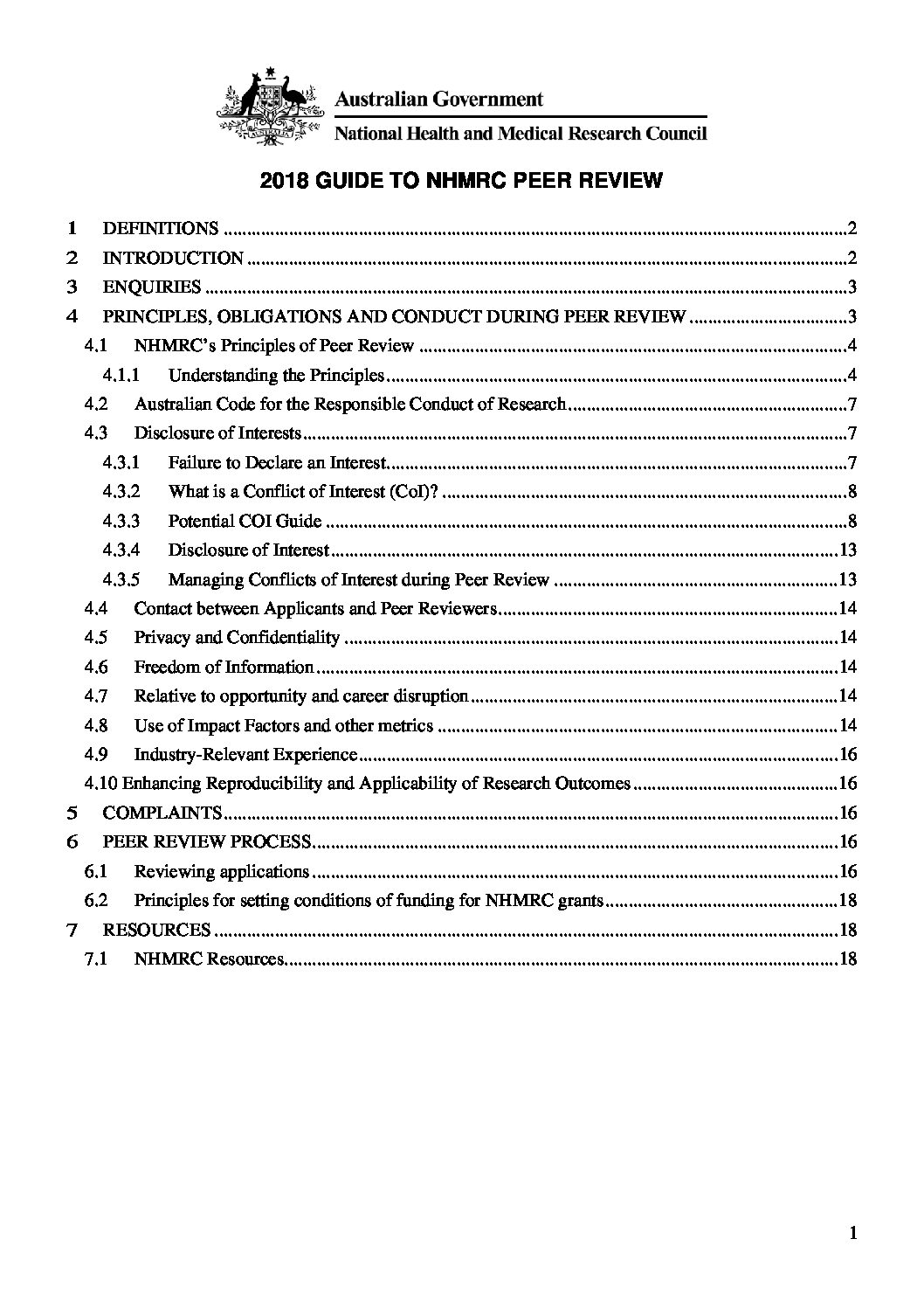

The NHMRC guide for peer review instructs assessors not to rely on the Journal Impact Factor when making judgments.
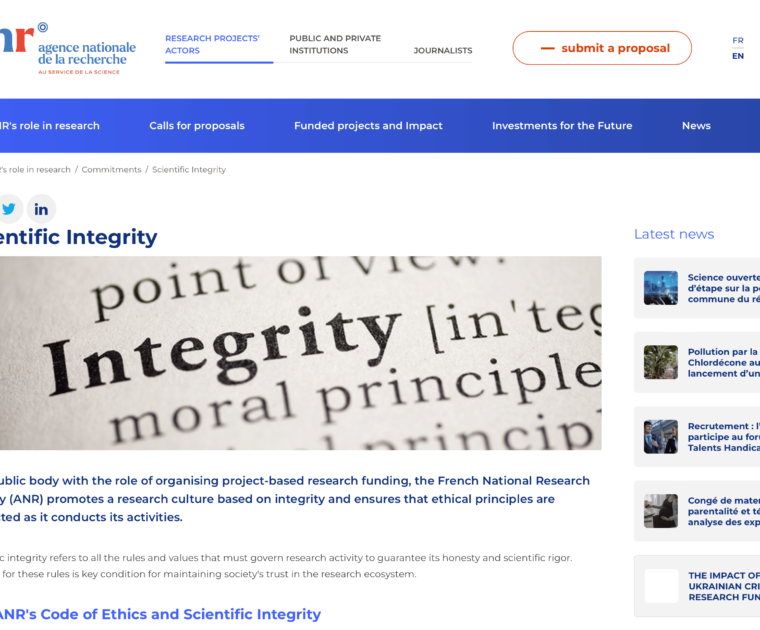
Applicants understand how funding decisions are made, because the Agency openly shares a general summary of its decision-making process on their website written in English and French.
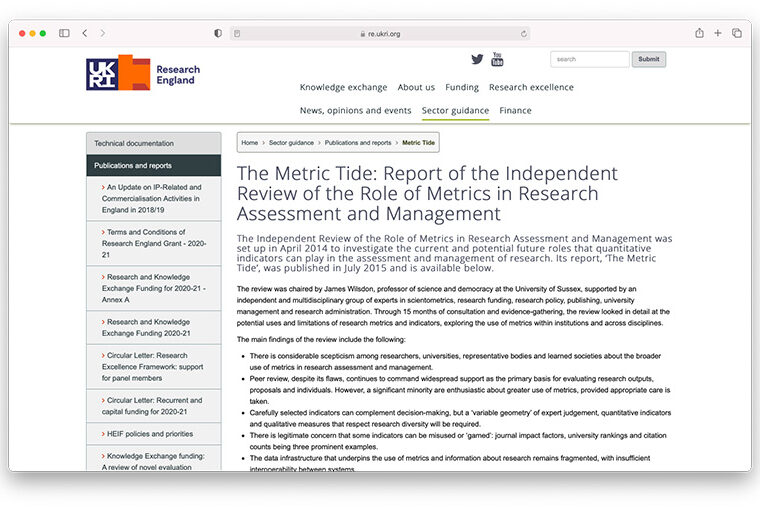
The Metric Tide was published in July 2015, and provides an extensive review of the literature on peer review, the use of metrics and altmetrics, and a statistical analysis of the predictive power of various numerical indicators (including the JIF).
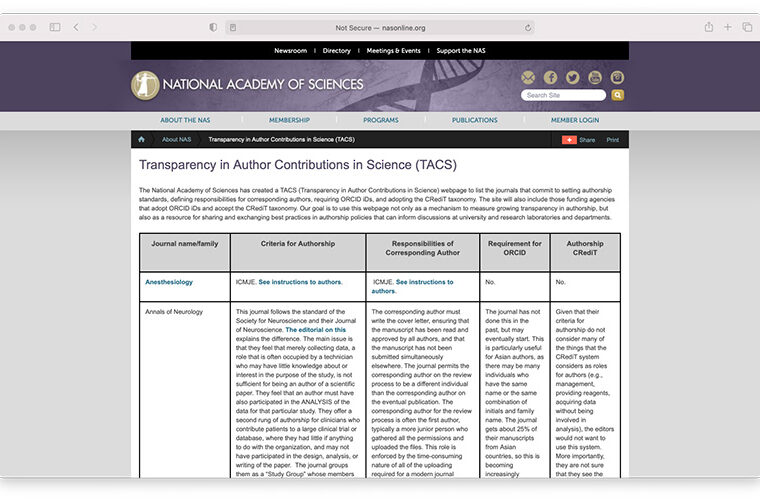
The National Academy of Sciences in the United States created a webpage to track journals that are engaging in fair authorship practices.
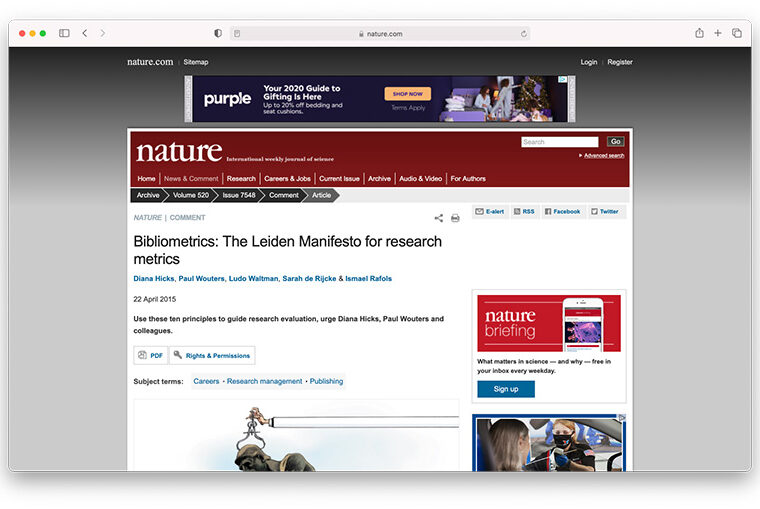
The Leiden Manifesto provides ten principles for the appropriate use of metrics in research evaluation.
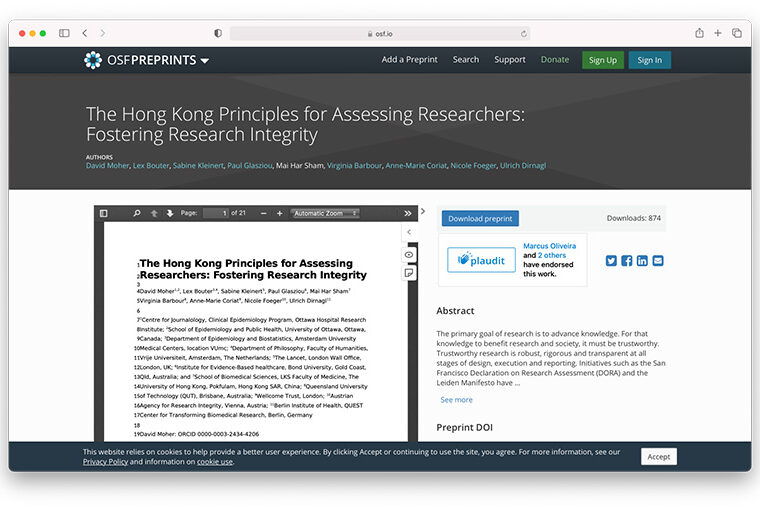
Institutions and funders can use the Hong Kong Principles to reward and recognize scholars for behavior that contributes to trustworthy research.
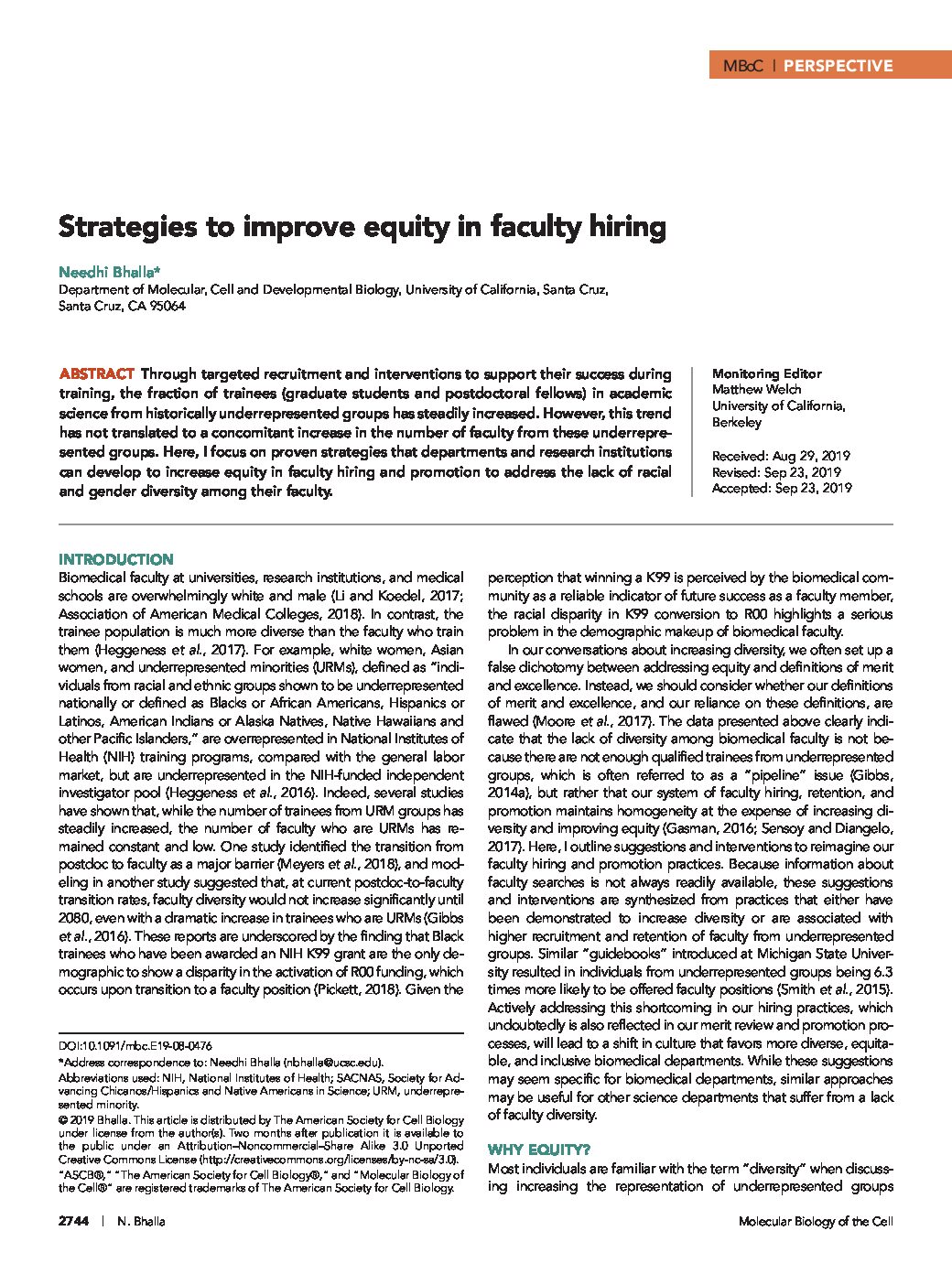
Despite the increasing number of underrepresented minorities in trainee positions, the number of underrepresented faculty members in academic science remains low.
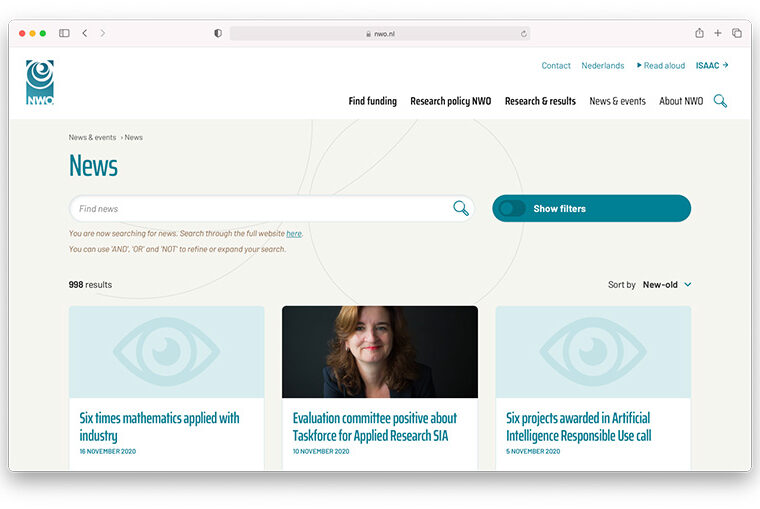
Dutch public knowledge institutions and research funders published a position paper ‘Room for Everyone’s Talent‘ rethinking their academic reward and recognition systems.
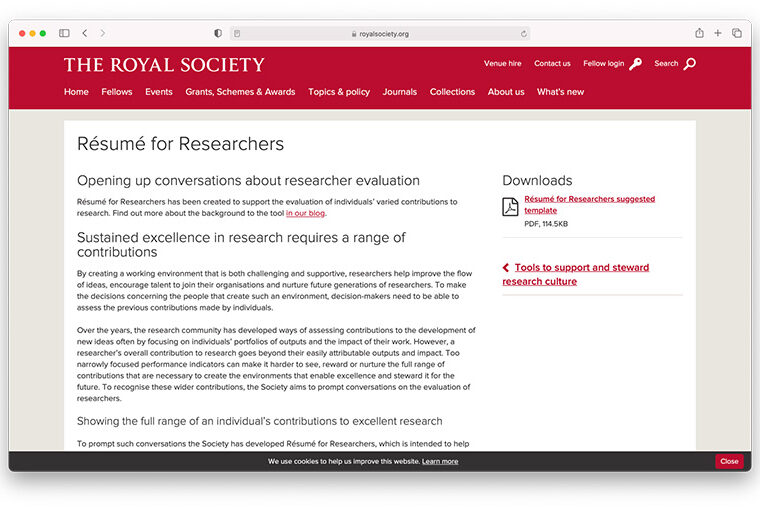
The Résumé for Researchers is a tool developed by the Royal Society to help support the evaluation and assessment of individuals’ varied research contributions.
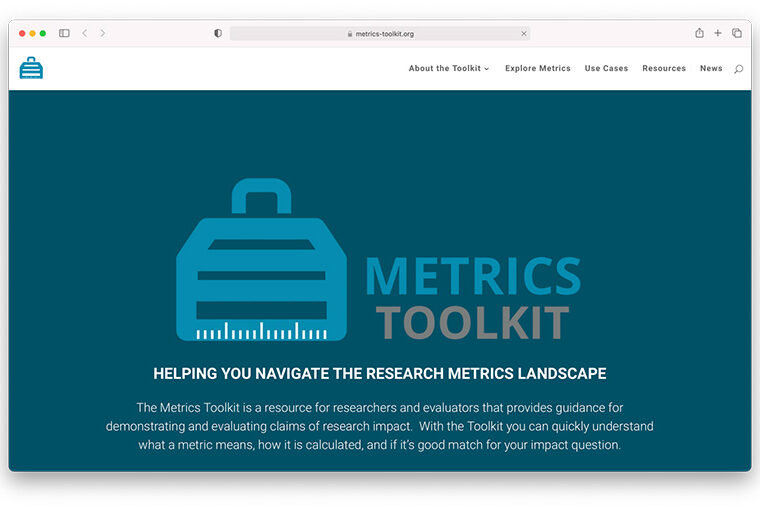
The Metrics Toolkit is an online resource that provides information about research metrics across scholarly disciplines to help educate individuals in the academic community.